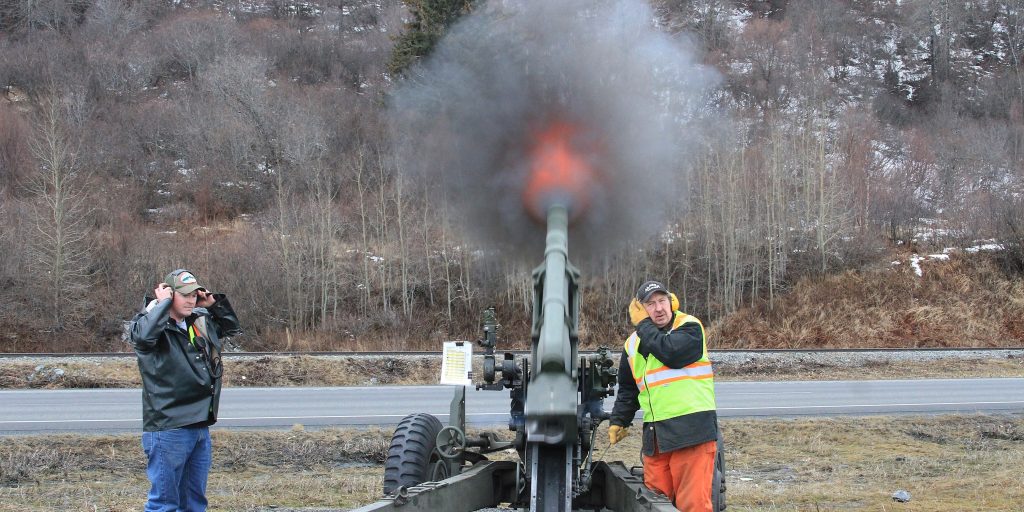THE BIG GUNS – Alaska
Alaska and snow have a close relationship, forged with fire. Or, rather, firepower. To keep uncontrolled natural avalanches from destroying the state?s roadways, Alaska Department of Transportation and Public Facilities? Chief of Statewide Maintenance and Operations Michael Coffey heads up a team that fights off the snow using an arsenal of heavy-duty firepower, including howitzers, dynamite and a brand new gas cannon.
Called the Daisy Bell, the $171,000 cannon hangs about 150 feet below a helicopter and triggers avalanches by emitting precise blasts of oxygen and hydrogen. These smaller, controlled avalanches are then quickly cleared away, ensuring larger, uncontrolled avalanches won?t destroy transportation infrastructure.
In the past, the Alaskan avalanche crews mostly shot down avalanches using a Korean War-era howitzer, but from set up to clean up, the process required about three hours of road closures. The Daisy Bell cuts this time down to about 45 minutes.
?This will result in fewer impacts to highway travelers,? says Coffey, adding that the process will also increase the amount of time crews can spend on snowplowing and other winter maintenance activities.
Dynamite, Coffey says, is also utilized when the howitzer cannot safely be deployed. Aerial- or heli-bombing, as it?s called, is performed occasionally along Alaska?s Seward Highway to prevent natural avalanches from damaging the roadway. It?s most often used in cooperation with the Alaska State Troopers. ?If they need to get into a certain area,? he says, ?we might do heli-bombing to make it safe for the troopers to go in for search-and-rescue type operations.?
Coffey says there are no clearly defined indicators that a particular area requires a blast from the cannons or a charge of dynamite, and that the decision relies on equal parts art and science. However, the four full-time state technicians take into account numerous factors in determining where a controlled avalanche would be beneficial. ?They are looking at the snowpack? they are looking at temperatures, particularly if there are temperature changes. They are looking at the water content of the snow? they are looking for weak layers [in the snowpack],? he says. ?Basically they are using the science to figure out when layers in the snowpack may give or may move.?
The number of controlled avalanches in a given season varies depending on weather conditions, but statewide, the DOT fires about 600 rounds per year from cannons with multiple rounds fired per mission. These 600 rounds cost approximately $56,000.















